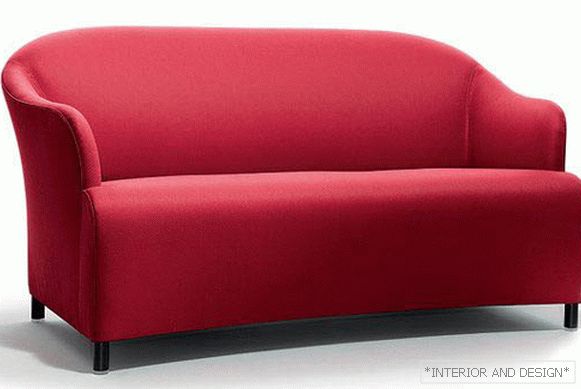Palm Springs Modernism Week (February 15-25, 2018) is a festival that not only residents of the California Valley are waiting for.
Related: California
Getting to Modernism Week in a city in the middle of the Coachella desert is a dream of modernists and Mid-century modern lovers, connoisseurs of post-war architecture and admirers of Albert Frey, Richard Neutra or Emerson Stuart Williams. From year to year, the number of participants arriving in Palm Springs is increasing in order to see monuments, authentic interiors, interior exhibitions and things of the 50s for eleven days, not forgetting about a martini glass by the pool.
1. Fashionable lens
 Photographer Tom Blatchford.
Photographer Tom Blatchford. The real star of the Palm Springs Modernism Week festivals was the photographer Tom Blatchford. And although lately he has been more passionate about night Tokyo than with the midnight decorations of modernist villas, his many famous photographs adorn many exposures, forever recording the melodramatic image of California modernism.
Related: Jacques Garcia in Los Angeles: Hotel in Former Bank
2. House traveler
 Special transport Aluminaire House.
Special transport Aluminaire House. An important event of the festival in 2018 - the relocation and installation of a metal construction Aluminaire Albert Frey. The three-story house moved to Palm Springs from a warehouse in New York and was re-assembled from aluminum and steel sheets in just 10 days. It was designed in 1931 for the exhibition of the Union of Arts and Industry in New York as a model for mass production. Freya’s goal was to offer affordable housing using low-cost materials. After the exhibition, architect Wallace Harrison purchased a prototype for his estate in Huntington, Long Island. In the late 1980s, he was transferred to the New York Institute of Technology. When the campus closed in 2013, the house went to a storage container.
3. Villas
 Frey House II, architect Albert Frey, 1963. Photo by T. Blatchford.
Frey House II, architect Albert Frey, 1963. Photo by T. Blatchford. The Modernism Week provides an opportunity to get acquainted with local villas with unique interiors, gardens and views that have been preserved from the 1950s. For example, to get into the house-workshop and gallery of the architect Jim Chiofi. Or in the minimalist Cody Glass house (arch. William F. Cody, 1967). Located in the mountains with a scenic view of the entire Coachella Valley, Frey House II was designed by architect Albert Frey and built in 1964. This is one of the two houses of Frey in Palm Springs - a small (250 sq. M.), With a curved pool and patio.
4. Hotel

The Riviera Hotel in Palm Springs was built in 1959. Architect Irwin Schumann created it in the image of large Las Vegas hotels, such as Sands, Flamingo and Star Dust. The wheel-shaped spa hotel beautifully anticipated the psychedelic culture of the 60s. "Riviera" was a favorite place of Frank Sinatra, Dean Martin and Elvis Presley.
5. Old Fund
 Twin Palms, Villa Frank Sinatra, architect Emerson Stuart Williams, 1947. Ed. powerHouse Books.
Twin Palms, Villa Frank Sinatra, architect Emerson Stuart Williams, 1947. Ed. powerHouse Books. Palm Springs - a mecca for celebrities. In the area of old Las Palmas, which was formed in the late 1920s and 30s, houses of Hollywood stars, including Kirk Douglas, Katherine Hepburn, Cary Grant, Judy Garland, have survived.
Related: Like a Star: Five Celebrity Homes For Sale
6. The house where Martin settled
 Villa Grigio, architect James McNaughton. 1964.
Villa Grigio, architect James McNaughton. 1964. Villa Grigio is the “weekend house” of Hollywood interior designer Martin Lawrence Bullard. The 1964 house project was created by James McNaughton for Hugh Hefner and Roger Moore. Before Bullard bought it, it was published in Tim Water-Porter’s book Palm Springs. Modernist Paradise "(Palm Springs; A Modernist Paradise. Rizzoli.)
7. Museum
 Palm Springs Art Museum, Center for Architecture and Design, architect E. Stuart Williams, 1961.
Palm Springs Art Museum, Center for Architecture and Design, architect E. Stuart Williams, 1961. The key address for modernism exhibitions is the Palm Springs Museum of Art, Center for Architecture and Design. The building of the mid-century was originally designed by E. Stuart Williams in 1961 for the Federal Bank. It was acquired by the museum in 2011 and reconstructed, guided by photographs taken by Julius Schulman, as well as original drawings by Williams.



